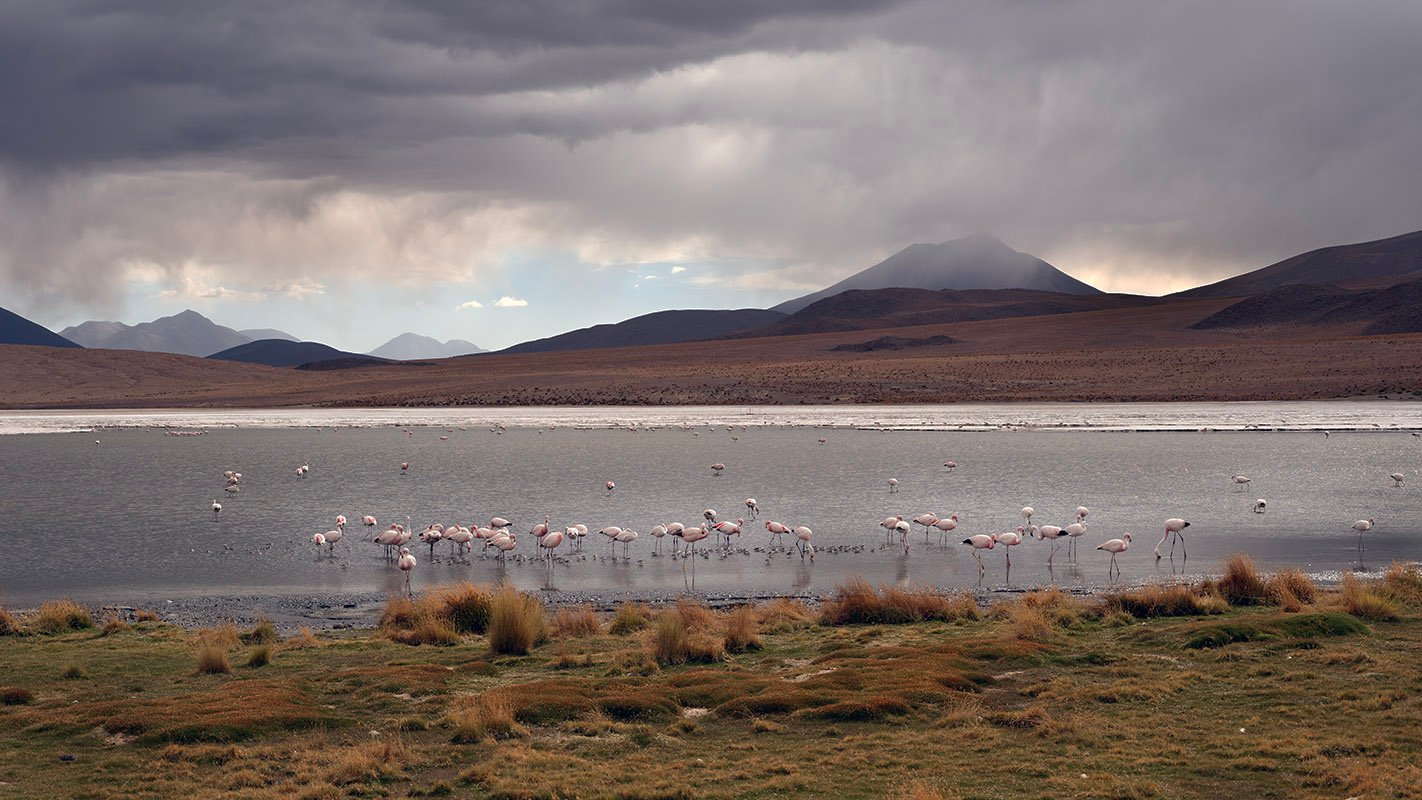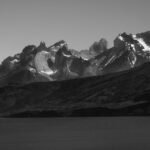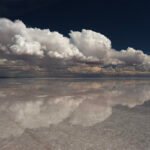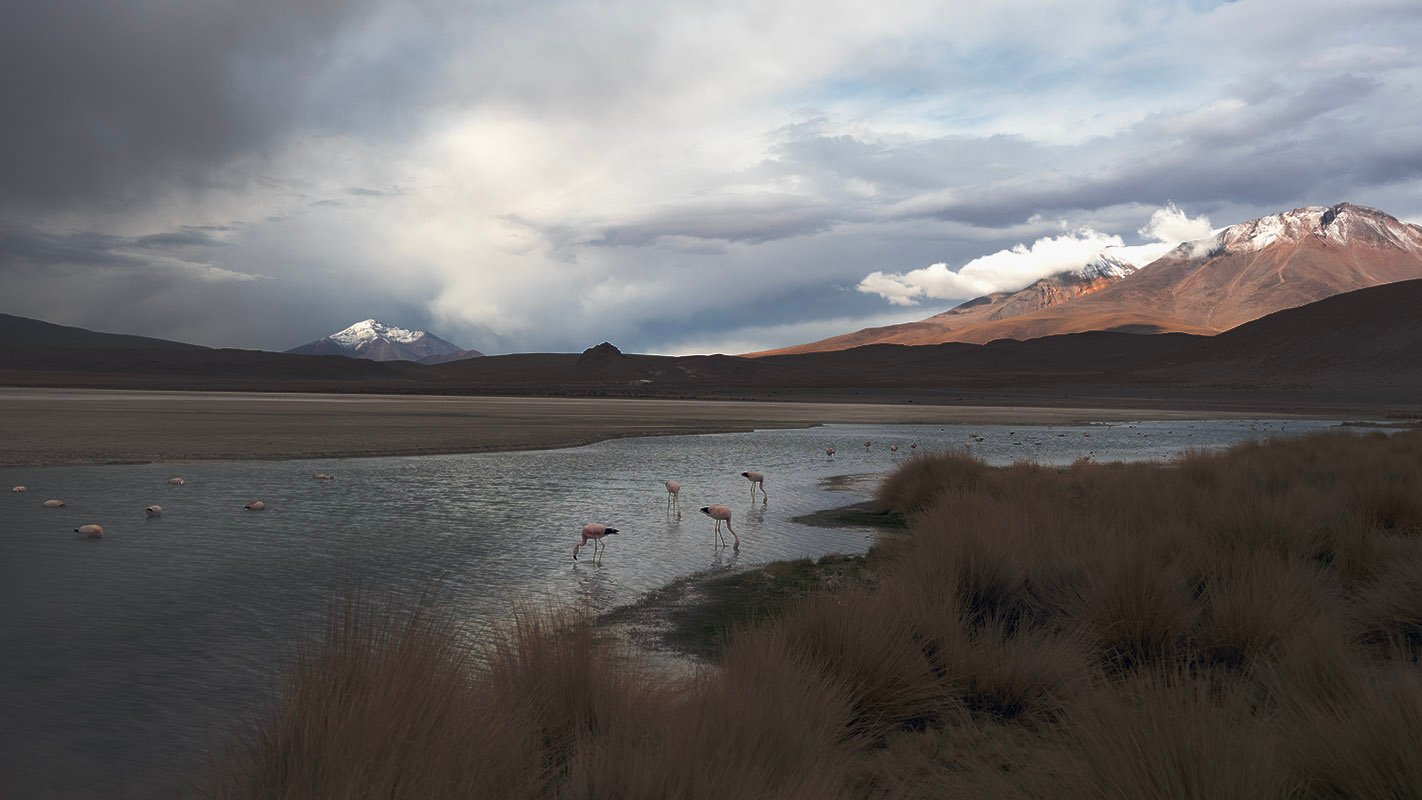Bolivian Flamingoes
These photos was taken in the Eduardo Avaroa Andean Fauna National Reserve in the southwestern highlands of Bolivia, near the Altiplano region. I can’t remember specifically, which scene is from Laguna Hedionda or Laguna Colorada, both of which are known for their high-altitude salt lakes and large populations of Andean flamingoes (along with James’s and Chilean flamingoes).
The snow-capped mountains, sparse vegetation, and surreal light conditions are characteristic of this remote volcanic plateau — often sitting at over 4,000 meters elevation. It’s one of the few places on earth where you can photograph flamingoes against a backdrop of volcanoes, deserts, and snow. Truly otherworldly.

We got out of the Toyota to stretch our legs, our breath forming little clouds against the chill of the high desert air. The Altiplano isn’t easy on the photographer – I was laid low by altitude sickness which (maybe) caused a splitting headache — it’s a place of extremes, and yet it holds moments of surprising gentleness.
And plans rarely go as expected at 4,200 meters above sea level. Especially after six hours of bone-jarring drive on unpaved, rocky terrain — the kind that makes you tells you the view at the destination is gonna be great. That’s the trade-off for getting to a place this remote and this quiet. Flamingoes don’t live next to highways.
By the time we reached the edge of the shallow lake, the flamingoes were already there, quietly wading and feeding in the icy water. And above them — thick, brooding skies. The light doesn’t look promising. And the flamingoes are definitely not pleased with us trespassers, we had to keep quite a respectful distance.
I hesitated. My photographer brain wasn’t sure if I’d get any good photos out of this.
But we had a bit of time, so we waited.
I had the Fujifilm GFX 50S II paired with the compact but sharp GF 35-70mm. Lightweight enough for trekking at altitude, but still delivering the unmistakable look of medium format. I shot this particular frame at f/5.6, 1/500 sec, (ISO TBC…). It was pretty dark so I needed to open up to f/5.6 but since this is my first trip using the camera, I wasn’t sure about it’s built-in stabilization, so I used a high shutter speed of 1/500. At 35mm wide-ish angle, the depth of field should be fine — I wanted to hold detail across the water and still catch the flamingoes and the mountain in the background.
I’m a portrait guy and am not great with landscape or wildlife photography. But it seems to follow the same philosophy. It’s not about chasing the pre-conceived perfect moment. It’s about surrendering to what’s there, and letting the place tell its own story. The longer we stayed, the more I began to notice: how the subdued light made the flamingoes’ pink feathers glow softly, not harshly. How the clouds cast moving shadows over the mountains, like a slow, breathless dance. The snow-capped peak in the distance, under that moody canopy, looked almost surreal — more painting than photograph.
I shot wide to capture the quiet grandeur of the scene. I shot close, crouching low near the grass, trying to make the viewer feel the cold wind and hear the soft ripples. And I remembered to pause, just to watch.
Funny thing — we came chasing the light, but ended up finding beauty in the lack of it.
This frame — the one that’s featured — wasn’t the “hero shot” I had in my mind when we set out that morning. But it’s the one I keep coming back to. It’s calm. Quietly spectacular.
 Previous post
Cordillera del Paine with Fujifilm X-E3 and XC 50–230mm
Previous post
Cordillera del Paine with Fujifilm X-E3 and XC 50–230mm
 Next post
Salar de Uyuni
Next post
Salar de Uyuni

